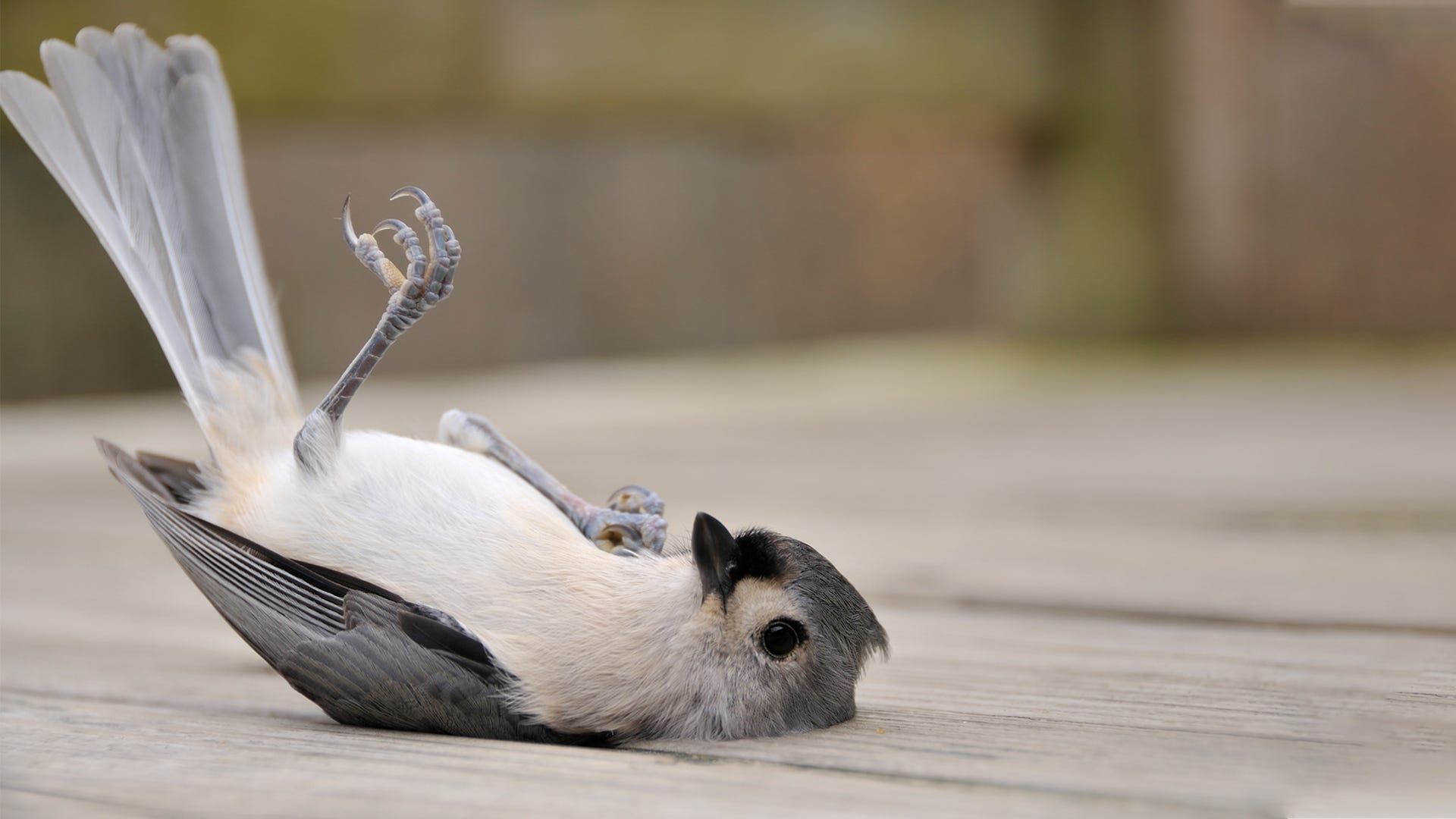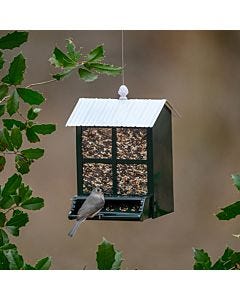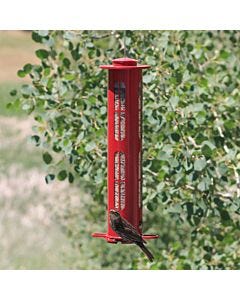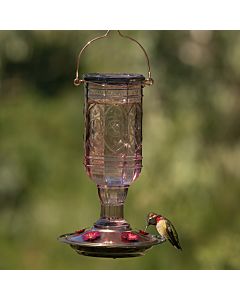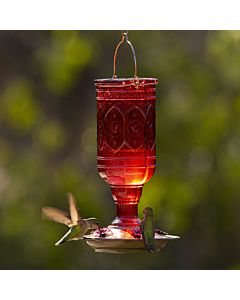By now wild birds are flocking to your bird feeders and darting across your yard; what a welcome sight! But seasoned bird advocates know that bird feeding, and watching, isn’t always all about Cardinals and Blue Jays. The most common backyard dangers, like windows, and predators, like rogue cats, can injure your favorite feathered friends.
Feeders, especially hummingbird feeders, should be placed within 15 to twenty feet from the nearest window. Windows that are made of a large pane of glass, such as a bay window, are the most dangerous type of window to place near a bird feeder. Since many wild bird species have exceptional vision, they can be baffled by the reflection of the sky and gardens seen in windows from the outside. Some birds will recover after crashing into a window, but many may not.
Additionally, neighborhood pets and feral cats are common threats to the birds feeding in your yard. Birders may notice that the seed offered in bird feeders is the main proponent of visiting feral cats. Unfortunately, in order to deter these predators and preserve the lives of the birds in our yard, you may need to take down your seed feeder and either move it or wait until the cats are no longer visiting your yard.
Windows and backyard predators are the most common causes of injured, or ailing, wild birds. If you find a helpless, injured bird in your yard, here are three simple steps to take.
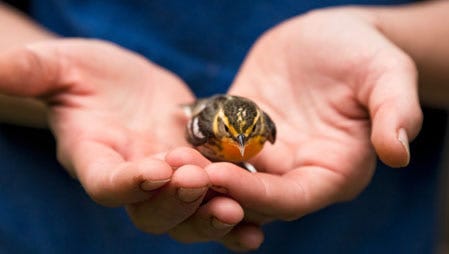
1. Make sure the bird is injured not orphaned. Some birders can mistake young, orphaned birds for injured ones. Young birds have weak flight muscles, short tail and wing feathers, and are often fed by their parents outside of the nest for a few days. So, assess the situation and if the wild bird is indeed injured move on to the next step of care.
2. Place the wild bird in a cardboard box and cover it with a lid or towel. Then place the box in a cool, safe place to give the wild bird time to recover from the shock of the injury. Be careful when handling the injured bird; use gloves to protect yourself from any disease or germ.
3. Check on the bird periodically to ensure that the situation is getting better. After multiple hours, and a stable condition, call a local wildlife rehabilitator that can nurse the wild bird back to health.
Vigilance is the key to bird feeding success for you and safety for your backyard buddies. Make sure that you are:
- Aware of bird feeder placement and maintenance - Remember to re-fill your feeders on a regular basis. Filling will become a common occurrence the more birds visit your yard. If you are offering a hummingbird feeder, clean the feeder two to three times per week; and more often during warm temperatures.
- Watching the activity at your bird feeders daily to determine patterns and behaviors - Typically the same birds will continue to visit your feeders once they establish it as a secure food source. They will more than likely return daily to feed, drink water, and clean their feathers if you’re offering a water source. As birds continue to visit feeders and you begin to learn their feeding patterns, consider adapting when you’re offering food. For example, birds feed early in the morning because that’s when they are the most hungry and active. Instead of leaving a bird feeder out all day for squirrels and other pests to get into, remove the feeder during the peak daylight hours.
- Enjoying the sights and sounds of summer bird feeding! This is an easy suggestion for us to pass on to birders. Enjoy the sights and sounds of wild birds flying around your yard and feeding at your bird feeders. Take out your camera, binoculars, and favorite bird identification guide and start bird watching!
We love to see your bird encounters, share them with us on our Facebook page.





